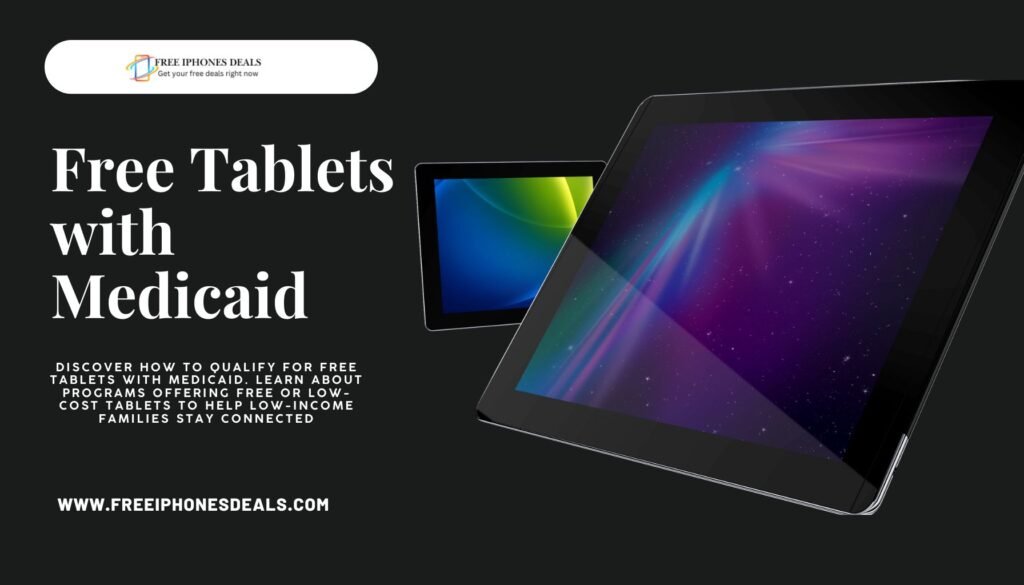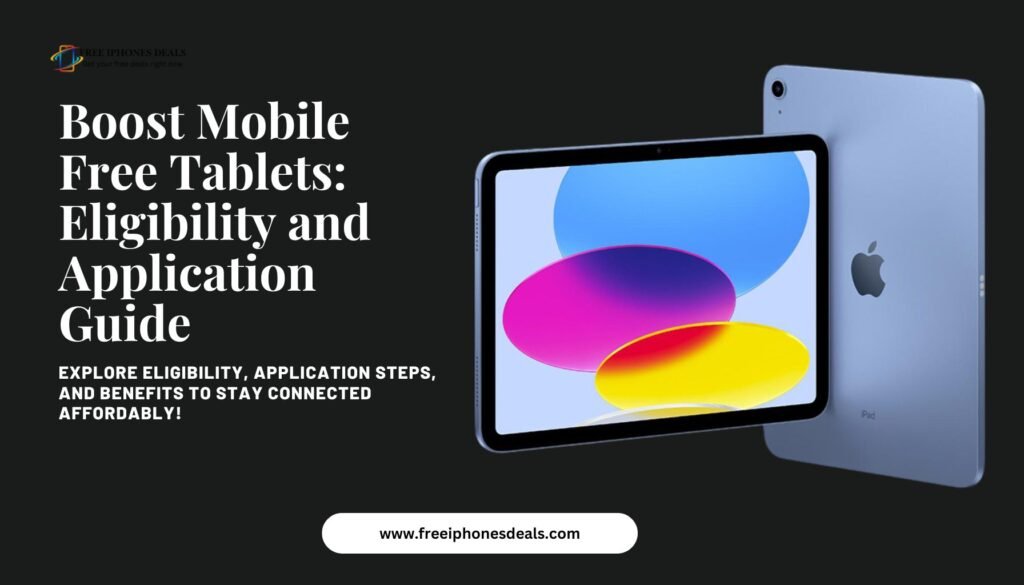Education, employment, and keeping in touch in the modern world all depend on access to technology including tablets. Getting a tablet can provide difficulty for low-income households. This article looks at initiatives, companies, and tools offering households in need free or reasonably priced tablets. In the modern world, technology is indispensable, but for many low-income households, affording tools like tablets still presents a difficulty. Luckily, there are projects and programs aiming at bridging the digital divide using free tablets for low income families. These tablets provide essential tools for education, job searches, healthcare access, and keeping in touch with loved ones; they are not only means of communication.

Offering these gadgets to qualified households comes mostly from government projects, nonprofit organizations, and community events. Programs like the Affordable Connectivity Program (ACP) and several nonprofit groups strive to guarantee that everyone, from all walks of life, may use technology. Financial background is not a barrier.
Further increasing accessibility are some wireless providers who provide free tablets as part of promotions connected to data plans. These initiatives seek to empower underprivileged communities so they may engage completely in the digital era. Discover choices for a free tablet and its eligibility criteria by reading on.
Why Tablets Are Essential for Low-Income Families
Educational Benefits
Tablets give kids and adults chances to improve their knowledge and abilities by opening doors to eBooks, online learning environments, and instructional apps. For virtual courses, research, and homework, they are absolutely essential tools.
Communication
For low-income households, tablets guarantee regular connectivity with businesses, schools, and loved ones. Messaging applications, emails, and video conferences simplify and increase access to staying in touch.
Job Search and Career Development
Tablets enable consumers to generate professional resumes, investigate employment prospects, and engage in online interviews. They also help access to online courses and certificates, so supporting skill development and professional progress.
Healthcare and Support Services
As telehealth becomes more common, tablets let families book appointments, access vital health resources, and participate in virtual doctor visits. They also act as a portal to government aid programs, enabling consumers to effectively administer benefits and search for support services.
Government Programs Offering Free Tablets
Affordable Connectivity Program (ACP)
To qualified homes, the ACP provides savings on internet access and linked devices such tablets. Families might get up to $100 toward a tablet purchase. Income or participation in federal aid programs as SNAP, Medicaid, or SSI determines eligibility.
Lifeline Program
Low-income people and families can get cheap or free tablets packaged with internet access from the Lifeline program. Candidates can apply via Lifeline-affiliated service providers who include linked devices throughout their offerings. This program guarantees that recipients have the tools need for education, communication, and more.
Local Government Initiatives
To close the digital divide, many local governments and educational systems operate tablet distribution initiatives. Targeting seniors, low-income families, and students, these programs provide tablets to enable access to vital services, job finding, and education. Inquire about availability from local agencies.
Nonprofit Organizations Helping with Free Tablets
EveryoneOn
EveryoneOn works with companies to enable low-income households access free or reasonably priced tablets and internet services. Their initiatives equip homes with the resources required for education and employment, therefore helping to close the digital divide.
Computers with Causes
This group gives families in need tablets and other electronics. Candidates have to go through an application procedure and offer documentation of need. The initiative emphasizes on enabling people to raise their quality of life by means of improved technological access.
The On It Foundation
The On It Foundation offers free tablets and PCs, committed to helping low-income students. Eligible families have to show financial necessity and have children ranging from kindergarten to twelve.
PCs for People
PCs for People refurbishes and provides free or low-cost tablets to qualified households. Their initiatives are meant to guarantee availability of technology for employment, education, and basic services.
Charities and Religious Organizations
Salvation Army
To aid low-income families, The Salvation Army provides a range of support initiatives including technical help. Based on the locality, they might offer free tablets or team with other companies to distribute necessary tools. By giving people access to resources for education, work, and communication, these initiatives hope to empower each person.
Local Churches and Community Centers
To give those in need free tablets, several local churches and community centers work with nonprofit organizations or hold tech fairs. For underprivileged populations, these projects sometimes center on helping with digital inclusion, job preparedness, and education. Finding such possibilities can be much aided by consulting local religious organizations or community centers.
School and Educational Institution Programs
Public School Districts
Public school systems all throughout the nation often run initiatives to close the digital divide by giving low-income pupils free laptops or tablets. Usually for online study, homework, and access to instructional materials, these gadgets are Parents or guardians can ask about eligibility and application procedures for such initiatives from the administration of their child’s school.
Colleges and Universities
Many schools and universities provide programs whereby free or inexpensive tablets help meet students’ academic demands. Usually, these initiatives fit under more general technology awards, scholarships, or financial aid programs. To provide devices as part of enrollment perks, some universities also collaborate with technology companies. Students could ask the financial aid or IT department of their university for choices.
Corporate and Manufacturer Programs
T-Mobile Project 10 Million
Aiming at eliminating the homework gap for low-income children, T-Mobile’s Project 10 Million is a major endeavor. To qualified students, the initiative offers free internet access and tablets among other tools. Families may apply straight with T-Mobile or through their educational systems.
Amazon
To provide free or discounted tablets, Amazon sometimes runs advertising campaigns or sponsorships with nonprofits. Usually announced during certain events or through nonprofit partnerships, these projects aim at underprivileged areas. Watch the Amazon website or announcements for such prospects.
Google and Tech Giants
To offer reasonably priced or free tablets, companies like Google and other tech behemoths regularly partner with charity and educational institutions. These initiatives seek to improve digital inclusion so that underprivileged areas have access to technology for connectivity and education. Look for announcements or local alliances.
How to Qualify for Free Tablets
Income-Based Eligibility
Many free tablet programs ask for evidence that your household income falls below than 135% of the federal poverty level. This guarantees that help finds those most in need. You may need documentation including benefit statements, tax returns, or pay stubs.
Enrollment in Assistance Programs
Additionally eligible for free tablets is participation in government aid programs including SNAP, Medicaid, Supplemental Security Income (SSI), Women, Infants, and Children (WIC). Many times, these initiatives team with companies to provide equipment to their recipients.
Application Process
Usually, requesting a free low income tablets requires finishing an online or in-person application. Candidates must send required paperwork including identification, government assistance enrollment, and proof of income. To be sure your application is complete, review the particular criteria of the program or company providing the tablets.
How to Apply for Free Tablets for Low-Income Families

Following these guidelines can help your family to get a free tablet:
- Identify Eligibility
- Verify your eligibility using your income or government assistance program participation—SNP, Medicaid, SSI, or WIC.
- See the particular criteria of the program or company providing the tablets.
- Research Programs
- Discover government projects such Lifeline or the Affordable Connectivity Program (ACP).
- Research organizations like The On It Foundation, Computers with Causes, or EveryoneOn.
- Visit neighborhood businesses, nonprofits, or local schools like T-Mobile’s Project 10Million.
- Prepare Documentation
- Get documentation of income, involvement in help programs, and a current ID.
- Make sure every paper is correct and current.
- Submit Applications
- Finish the application by visiting the office or website of the company.
- Send any requested documentation; follow up if necessary.
- Stay Updated
- Track program changes and announcements of fresh prospects.
Following these guidelines can help you raise your chances of getting a free tablet to meet family demands.
Free Tablets For Students
For pupils especially from Free Tablets for Low-Income Families backgrounds, free tablets are vital tools guaranteeing equal access to education. Particularly in the digital classroom environment of today, several initiatives and groups give free or reduced tablets to enable students thrive academically.
For qualified families, government programs including Lifeline and the Affordable Connectivity Program (ACP) provide free or heavily reduced tablets. T-Mobile’s Project 10Million also offers students in need free tablets and internet access.
Often with an application process requiring proof of need, nonprofit groups like The On It Foundation and Computers with Causes provide free tablets to students from low-income homes. To provide reasonably priced devices, EveryoneOn also collaboratively works with local businesses and educational institutions.
Particularly in areas with high poverty rates, several colleges and institutions also provide free or heavily subsidized tablets to students so they have the tools required for remote learning and academic success.
Tips for Applying and Maximizing Benefits
Research Multiple Programs
Look at several initiatives providing free or heavily subsidized tablets. Different eligibility requirements for each program mean that applying to several projects increases your chances of getting a gadget. Research local community resources, NGOs, and government initiatives.
Provide Accurate Documentation
Make sure all needed records—proof of income, residency, or enrollment in programs like SNAP or Medicaid—are current and accurate. Inaccurate or inadequate documentation could postpone or disqualify your application.
Stay Updated
Look for announcements on new or continuing projects often from local governments, businesses, and educational institutions. To keep updated about forthcoming free or reasonably priced tablet possibilities, follow these organizations on social media or register for newsletters.
Conclusion
For low-income households, free tablets can be transforming; they close the digital gap and provide access to education, communication, and employment possibilities. Families can get the tools and technologies they need to flourish by looking over the programs and services highlighted here. For Free Tablets for Low-Income Families especially, education, communication, and personal growth depend on access to technology. The digital divide is being bridged in great part by free tablet programs run by government projects, non-profit organizations, businesses, and colleges. These initiatives enable families to access career possibilities, online learning, and basic services, therefore promoting development and self-sufficiency. Eligible families can maximize their quality of life by investigating accessible possibilities, offering proper documentation, and keeping current with new prospects. These initiatives taken together help to create a society more linked and fair.

